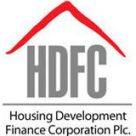
Raheema Saleem
Managing Director of the Housing Development Finance Corporation (HDFC)
Finance / Maldives
“We’ve had a 110% growth in clients for Shariah-complaint mortgages over the past year”
The Housing Development Finance Corporation (HDFC) was launched in 2004 to address a housing market that was being inadequately served by banks. Today, it is a stalwart in the emerging Islamic finance industry, having issued two sukuk to date, and is now envisioning a near future where Islamic finance outstrips conventional banking. Raheema Saleem, Managing Director of HDFC, tells us how HDFC has become a barometer for the Islamic finance pulse of the nation.
Can you explain the mission of HDFC as the only mortgage housing institution in the Maldives and how it is performing today?
The key vision for HDFC when it was formed in 2004 was to provide housing loans to those people that were not being catered to by banks. Back then, to acquire a land title for a house the plot needed have to be at least 600 square feet. But due to land scarcity, when you share a piece of land with a family of 10, most of the time it measured less that the requirement and therefore no banks would consider them. That is the reason why HDFC was incorporated – to provide to those who had no means to acquire housing funding. HDFC was later privatized in 2008 by shareholders, including the ADB, IFC and HDFC India. In the beginning, capital was a problem: HDFC received only $75,000 of initial capital. We had to raise funds through corporate bonds. Today, our portfolio is valued at $91 million. As of June 30, 2017, our NPLs were less than 0.57%, and Care Rating rates us AA for our debts, which are listed on the Maldives Stock Exchange.
Can you tell us about your pioneering experience in launching sukuk?
HDFC’s first sukuk was opened to the public in September 2013, followed by a second sukuk issuance in July 2017. Sukuk was a new thing to the public and Islamic finance was also pretty new to most people. The response was not very favorable at first. However, the second issuance received a far better response from the public. The most challenging thing was making the public understand the difference between an Islamic sukuk and a conventional bond. Today, the public’s understanding is much better regarding how the profit is shared and how the returns on investment work. In 2013, the sukuk only got $1.43 million of subscriptions. For the second sukuk, we saw a $5.78 million subscription. People are more aware now, and at present we’re not the only institution providing Islamic finance. Bank of Maldives and Maldives Islamic Bank also provide Islamic finance products and services. But those are banks; we’re not a bank. The greater percentage of our business is still conventional mortgages. More than 20% of our portfolio is Shariah compliant, and the demand for Islamic finance is growing much faster than conventional loans. We’ve had a 110% growth in clients for Shariah-complaint mortgages over the past year.
Can you give us the perspective of how you foresee Islamic finance growing in the Maldives?
We anticipate that in five to 10 years’ time, the conventional segment will be taken over by the Islamic facilities. Today, in the Maldives we have several institutions that provide education in Islamic finance, such as the Maldives Islamic University. When we open a job for our Islamic finance division, HDFC Amna, we receive a good response and some of them hold master’s degrees in Islamic finance, which was not the case when we initiated the Islamic wing in 2012.
Can you explain the big property projects HDFC is currently investing in?
Hulhumalé is the next “big thing” and it is where we will have our exclusive projects for the next three years. All these mega projects are end-user financing projects. We are unable to take more exclusive projects due to funding constraints. Our biggest challenge is mismatch in funding, as we provide loans for 20 years, while most of our funding is short-term in nature. We borrow from commercial banks at a very high interest rate for five years; Islamic funds are borrowed for a maximum of two years. Due to this, the second sukuk was offered at a 10-year term. All our loans are insured and we were the first institution to have mortgages insured. Such initiatives have saved us; for instance, none of our loans were impacted during the 2004 tsunami.
What trends should investors consider before investing in the housing market?
Our total population has not reached 500,000, and 41.6% of the population is below 24 years old, according to 2018 national statistics. Those are the nation’s future homeowners and renters. To address this young population we have launched a new product for youth. The criteria for a youth loan is to have a sound job, and then the equity will be 15% instead of 20% with a tenure of 30 years, which no other institution has provided so far.
What advice would you give potential Gulf investors?
The key sectors that should be considered are the tourism and housing sectors. Housing can offer a good return because of the huge demand for rentals. Rent yields here are as high as Mumbai. One reason is because of the opportunities available in terms of jobs, education and business. My personal advice is that the Maldives has several opportunities for investors besides these two sectors, but they need to do their market research well so that it will be a win-win situation for both the investors and the borrowers.
